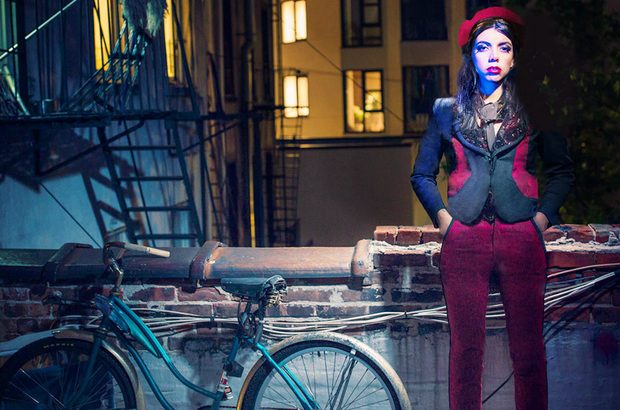DANIEL JACOBSON reviews New Orleans Americana band Hurray For The Riff Raff’s London gig at KOKO.
You can cut all the flowers, but you cannot keep Spring from coming – Pablo Neruda
I am not a protestor.
Though this is probably due to a fairly pathetic combination of my dislike for large crowds and lack of conviction, I like to think I’m taking some sort of moral high-ground. Despite the politically difficult times in which we find ourselves, I still retain a deep-rooted disillusionment with the way we protest, where the act of protest itself is often given more weight than its intended goals. This is reiterated in The End of Protest: A New Playbook for Revolution, by Occupy Wall Street co-creator Micah White, who refers to the reliance on mass media and lack of focused goals (resulting in the infamous ‘Destroy Nothing. Occupy Everything’ mantra) as reasons for the ‘constructive failure’ of the movement. Protest is a crucial way of defending our most basic human rights but, especially within our current environment, but we must ensure our message is clear and our vision rooted in the long-term.
Enter Alynda Segarra, lead singer of New Orleans-based Americana outfit Hurray For The Riff Raff, whose 2017 concept album The Navigator has proven to be one of this year’s most important records. Whilst retaining the notorious passion of the protestor, she is also an artist who is completely sure of what she wants to achieve as an activist: first and foremost, justice for the people of Puerto Rico. On account of her heritage, she is often compared to Lin-Manuel Miranda— indeed, the sparks of colour of ‘In the Heights’ and the revolutionary zeal of Hamilton are deeply felt in her work, though the theatricality of Broadway is swapped out for the harsher setting of a fourteenth floor of a Nuyorican projects building.

It has become commonplace to see artists condemning Donald Trump, but Segarra is living proof of the very real human consequences of his actions. Following the devastating Hurricane Maria last month, municipal water services in the US territory are yet to be restored, and sewage treatment remains out of service for thousands of citizens. Yet Trump has approached this issue with his trademark mix of apathy and self-righteousness. It was clear from the Puerto rican flag draped over the keyboard and the phrase ‘We’re All In This Together’ illuminating the stage that Segarra’s set at KOKO would have a political edge. However, what she offered was not simply a benefit concert — it was a call to arms.
Segarra chose to open the set with the blues-tinged ‘Life To Save’, in which she expresses her wishes for a better world. I was expecting her to open with the album’s first song ‘Living In The City’, though this would not have aligned with her vision for the set. ‘Living In The City’ is a scene-setter for the world in which the record is set, but now we live in a different world. Her choice of opening bridged the gap between the world of her character, The Navigator, and that of Segarra herself. This was also apparent during her painfully affecting performance of ‘Rican Beach’, which she dedicated to ‘my people, who are suffering right now’.

Despite the sobering tone that pervaded much of the show, Segarra’s message was also one of hope. As someone clearly inspired by New York punk-rock legends like Patti Smith and Television, Segarra has become one of the most captivating bandleaders around, with her injection of visceral energy that is more inspirational than informative. This fuelled her performance of the joyful and rousing ‘Hungry Ghost’, as well as her closing of the set with a cover of Bruce Springsteen and the E-Street Band’s ‘Dancing In The Dark’, leaving the audience entranced. The peak, however, appeared during the final moments of the album’s lead single ‘Pa’lante’, which roughly translates as ‘onwards’. Her electrifying calls of ‘To all who lost their pride I say, Pa’lante’ ringing in the audience’s ears long after the set was over.
For me, what this set displayed was a new side of The Navigator that I had yet to come across. The record is, fundamentally, a story with politics woven into the heart of its narrative. At KOKO, Segarra realised that politics had to take centre-stage, as something that would encourage her call-to-arms. I believe that the measure of a protestor is in their actions following the protest, and Segarra has no choice but to live and breathe her struggle. Has she inspired me personally to take to the streets? Maybe in time, but we must learn to apply our right to protest more effectively and to begin doing so as soon as possible. Trump has not yet dragged us, kicking and screaming, into war. He will, though, and once he does, we need to know how to respond . Maybe all we need to do is take a page out of the playbook of Alynda Segarra.
Featured image courtesy of birdonthewire.net





